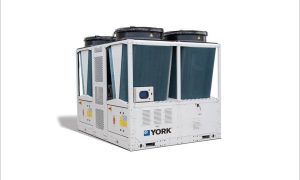Anubha Ashitikar, Architect, Sustainability Consultant, President ISHRAE Raipur SCH, MoFSAI, Founder Member IIID Dubai.
HVAC systems play a vital role in green buildings to reduce energy consumption, what are the latest trends in HVAC solutions? HVAC industry has seen a drastic changeover in the recent times, especially in this post pandemic, recovering economy. The latest trends in the industry focus over the following criteria:
- Energy Efficiency: The constant increase in the rates of electricity requires the HVAC systems to be more energy efficient than ever.
- Programmable Products: The norm today is digitalisation. Consumers are looking for products that can be scheduled for various loads or products that can be remotely modified via an authorised channel. Products which are adaptable as per the requirement.
- Eco Friendly HVAC systems: The rising awareness towards the environment and sustainable development has impacted the HVAC industry as well. Consumers are now aware of, and enquire about the impact of the HVAC systems on the surrounding environment.
- Integrated Development: The green building development in the country has made the consumers to wish for such systems that optimally utilise the features of the building and minimise the size of the HVAC systems while delivering enhanced performances.
- The HVAC industry is realising these trends and constantly catering to them through extensive innovation focusing on the aforementioned trends.

How do you see the demand and market of energy-efficient HVAC products and technologies evolving in India and their availability and cost-competitiveness?
The recent times have witnessed a great surge of ideology towards energy efficiency, both from the government(s) and the consumers alike. This has resulted in development of policies and regulatory bodies to overlook, check, and control the energy efficiency of devices and systems. This shift towards energy efficiency is and will result in a tremendous growth in opportunities for the energy efficient devices and systems. This growth is bound to increase the availability and cost competitiveness of the said products many-folds.
Looking at the Indian geographic conditions, what kind of determination and orientations we need, to shift towards green buildings?
We need following determinations/ orientations to achieve the goal:
- Awareness: The government(s), government bodies and consumers need to be further made aware of the benefits of the green buildings, to get the focus of all the relatable industries to innovate in this field
- Encouragement of green building construction: Policies need to be made and adopted to encourage the green building construction. These could be subsidies in construction materials or incentives on construction of such buildings or rebate in taxes on construction of such buildings.
- Focus on innovation: The cost of construction of a green building can be reduced if innovations in the field bring out economical building materials/ techniques /practices, reducing the payback time of the cost invested in adoption of green building constructions.
- Economic Support: The current scenario of the green building construction results in an increase of the cost of construction by 10 – 15 percent approx., which may sometimes exceed the allotted budget of the building. If focused economic aids or loans at low rate of interest are introduced in the market, it will definitely make the focus shift towards green buildings.
Would it be fair to say that the usage of HVAC solutions in green buildings is only going to increase in the new normal? Yes, it is fair to say. In the new normal, the focus is shifting towards sustainable development, and also, increase in comfort. As the demand for comfort increases and a more integrated building development approaches, the load on HVAC systems will increase. With the digitisation of the surroundings, more and more devices are getting programmable, and smart, and generating gargantuan amounts of heat, which needs to be circulated out at a raid and regular pace. Also, with the focus towards the environment, the HVAC systems will have to be capable of multiple re-utilisations of the heat generated, instead of just dumping it into the environment.
Digitalisation enabled Industry 4.0 technologies are being introduced to traditional HVAC solutions to augment its utility, kindly shed some light on these developments?
As, an architect, it is a tad bit difficult to explain on point, the technical aspects of the technologies involved, yet in my opinion, following technological enhancements are being augmented to traditional HVACs:
- Integration of Renewable energy: The HVAC industry has long been looked upon in disdain as one of the biggest consumers of energy in any building. The industry has constantly worked to reduce the consumption, and is now constantly focusing on shifting the whole consumption to renewable energy. Traditional HVAC systems are being attempted to be aligned to solar energy generators through the use of batteries.
- Introduction of Sensors: HVAC systems are getting programmable and modified to meet the needs of the day. For instance, Panasonic some years ago introduced a home split AC system, and advertised it as the “loyal” AC, as it could be set to make the air flow follow a person across the room, using a motion sensor in a traditional split AC.
- Air quality: Traditional HVAC systems are being updated to monitor and regulate the air quality of a building, which earlier was maintained manually. Today, the prime focus of the HVAC systems is not just circulation of the air within a closed space, but also, to keep that air breathable and as pure as attainable.
- Waste Heat Reutilisation: HVAC systems are being altered to not vent out the generated heat to the environment, rather have it redirected to other part / facility/ service of the building / compound/ society and get that heat utilised.
- Less resource consumption: HVAC systems are being upgraded to use lesser resources (like water for water-based HVAC systems) and to reuse the resource, so as to result in an efficient unit.
How much can offices and large buildings benefit from energy efficient constructions? Does it affect the productivity and sustainability of the same?
The question is circumstantial and depends upon the extent of materials/technologies/ devices used by the building owner during the construction of the building or in later stages. Instances have been presented in the country where a building has achieved the tag of ‘net zero building’ or even ‘net positive building’ meaning their consumption of energy over a year is virtually same or less than the energy generated by them through various energy efficient solutions equipped in the building. So, virtually and theoretically, there is no extent of the benefitting from the energy efficient constructions, and is only limited by the extent of the materials/techniques utilised by the constructor/ owner.
What is the current government role and contributions to encourage the use of energy efficient buildings?
Governments, both central and state have understood the vitality of sustainable development and are tirelessly toiling to achieve the vision of sustainable development as a habit in the society. The governments are working on the principle of simultaneous please and penalise policy by providing incentives to overachievers and penalising the violators.
The Energy Conservation Act (2001), the Energy Conservation Building Code (ECBC), Ujala scheme, are some of the commendable initiatives taken up by the central government(s) over the years. While, state governments have taken their own initiatives by providing incentives to the consumers so as to encourage sustainable development. This zeal and enthusiasm of the governments have percolated to the last levels with the Urban Local Bodies (ULBs) making their own rules/regulations/policies to adopt sustainable development. A minute example of this is compulsion of inclusion of rain water harvesting systems/ techniques in all new buildings by all the Urban Local Bodies. So, it can be deduced that the governments are doing an appreciable effort to include sustainable development and many more of such efforts will be visible soon.
Cookie Consent
We use cookies to personalize your experience. By continuing to visit this website you agree to our Terms & Conditions, Privacy Policy and Cookie Policy.















